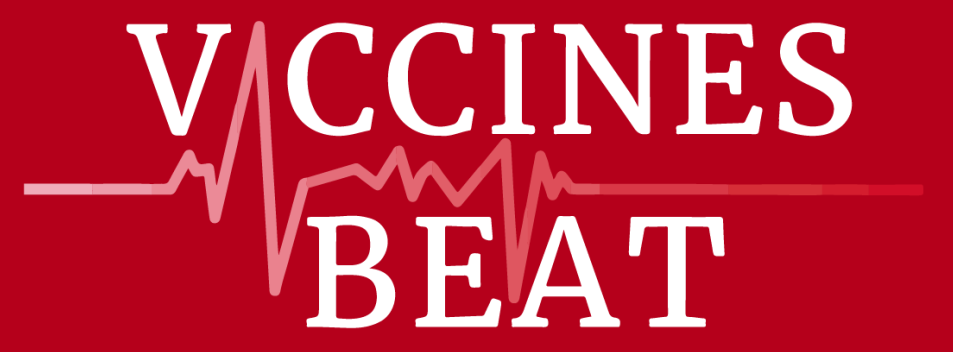Introduction:
Meningococcal disease (MD) was first documented in 1805 by Swiss physician Gaspard Vieusseux who described a fiѐvre cérébrale maligne non contagieuse”(non-contagious malignant cerebral fever. It was not until 1887 that Neisseria meningitidis (Diplococcus intracellularis meningitidis ) was cultured and identified as the causative agent. Currently, there are 12 serogroups of N. meningitidis that have been identified. Serogroups A, B, C, W-135, Y and X represent the most common causes of invasive meningococcal disease. N. meningitidis is found with and without a capsule; however, pathogenic strains are always encapsulated. The polysaccharide capsule is an important defense mechanism for evading the body’s antibody and complement mediated defenses and inhibiting phagocytosis. MD rates are highest among infants and elderly, with a peak in incidence in young adults. Endemic MD more frequently affects infants and young children, whereas outbreaks occur at a higher rate in adolescents and young adults who are in turn the most important carriers. Age-related distribution is also seen in the etiological agent. Infants have a higher incidence of infection from serogroup B. Serogroup C affects adolescents and young adults and the elderly have an increased incidence of serogroups B and Y. MD presents with unique seasonal variations throughout the world. In sub-Saharan Africa (the Harmattan condition), the highest disease rates occur during the dry season and associated with outbreaks. In North America, however, disease rates spike in winter and spring, though lately there has been found an association of MD with the hot-dry Santa Ana winds from Southern California and North of Baja-California, Mexico.
Environmental and socioeconomic factors predisposing to infection have been described in several studies. Notably, low socioeconomic status, crowded living conditions, urban residence and exposure to tobacco smoke all enhance susceptibility to meningococcal infection, as well as immunodeficiencies, particularly humoral and/or complement-derived anomalies. Invasive meningococcal infection is responsible for a wide clinical spectrum. Manifestations occur within 1-14 days of infection. Initial signs and symptoms mimic those of other bacterial infections, making prompt identification difficult. Meningitis occurs in 50-70% of cases. The most severe manifestation is septicemia, or meningococcemia, which characteristically presents with abrupt onset of fever and a purpuric rash. Patients can develop fulminant meningococcal sepsis (FMS) within hours and may not present signs of meningitis. The disease can rapidly progress to septic shock, acute adrenal hemorrhage (known as Waterhouse-Friderichsen syndrome) and ultimately multiorgan failure. The overall mortality of MD is between 10 and 40%, even with aggressive treatment. Sequelae of MD can be as devastating as the disease itself and occur in 11-19% of survivors. Without treatment, MD almost invariably results in death or severe long-term sequelae.
Vaccines:
Either as an endemic disease, or as a cause of devastating outbreaks, MD can be prevented by vaccines.
Currently there are three types of vaccines that are available for use:
polysaccharide, polysaccharide-protein conjugate and a multicomponent protein-based vaccine that covers serogroup B, as well as (Table 1).
Table 1. Some of the current Meningococcal Vaccines: Trade names, Components, Advantages/Disadvantages:
Polysaccharide:
| Mengivac® | Serogroups A and C | Control outbreaks | Poor T-cell response Poor booster response Useless in infants |
| Menomune® | Serogroups A, C, W and Y | Control outbreaks | Poor T-cell response Poor booster response Useless in infants |
| AC Vax® | Serogroups A and C | Control outbreaks | Poor T-cell response Poor booster response Useless in infants |
| ACWY Vax® | Serogroups A, C, W and Y. | Control outbreaks | Poor T-cell response Poor booster response Useless in infants |
Polysaccharide-conjugate (glycoconjugate):
| Menjugate® | Serogroups A, C, W and Y. | Routine vaccination Control outbreaks | Enhanced T-cell response Prolonged Immunogenicity Very immunogenic in infants Serogroups B and X not included |
| NeisVac-C® | Serogroup C | Routine vaccination Control outbreaks | Enhanced T-cell response Prolonged Immunogenicity Very immunogenic in infants Serogroups A, B, Y, W and X not included |
| Menjugate® | Serogroup C | Routine vaccination Control outbreaks | Enhanced T-cell response Prolonged Immunogenicity Very immunogenic in infants Serogroups A, B, Y, W and X not included |
| MenAfriVac® | Serogroup A | Routine Vaccination Control Outbreaks An extremely success in the Sub-Saharan Africa. | Enhanced T-cell response Prolonged Immunogenicity Very immunogenic in infants Serogroups B, Y, W and X not included |
| Nimenrix® | Serogroups A, C, W and Y. | Routine vaccination Control outbreaks | Enhanced T-cell response Prolonged Immunogenicity Very immunogenic in infants Serogroups B and X not included |
| Menveo® | Serogroups A, C, W and Y | Routine vaccination Control outbreaks | Enhanced T-cell response Prolonged Immunogenicity Very immunogenic in infants Serogroups B and X not included |
| Menactra® | Serogroups A, C, W and Y. | Routine vaccination C | Enhanced T-cell response Prolonged Immunogenicity Limited imunnogenicity in infants < 9 months Serogroups B and X not included |
| Men5CV® | Serogroups A, C, W, Y and X | Control Outbreak Possibly for routine vaccination | Enhanced T-cell response Prolonged Immunogenicity Very immunogenic in infants Serogroup B not included Currently used only in Nigeria |
Protein-based:
| Trumenba® | Serogroup B | Routine vaccination Control outbreaks | Manufactured through reverse vaccinology Enhanced T-cell response Prolonged Immunogenicity Avoids antigenic mimicry between serogroup B protein and human antigens Potential variable cross protection vs. gonorrhea Limited to serogroup B |
| Bexsero® | Serogroup B | Routine vaccination Control outbreaks | Manufactured through reverse vaccinology Enhanced T-cell response Prolonged Immunogenicity Avoids antigenic mimicry between serogroup B protein and human antigens Variable cross protection vs. gonorrhea Limited to serogroup B |
In addition, we currently have two pentavalent vaccines using four serogroups by glycoconjugation (A, C, Y, W) and serogroup B through reverse vaccinology, these are Penbraya® and Penmenvy®.
Surveillance
Active surveillance is the cornerstone in understanding epidemiological trends and implementing appropriate preventions. However, much of the world has yet to recognize the need for surveillance. Underreporting, absence of established surveillance systems, insufficient diagnostic methods, inconsistent case definitions and social afflictions all affect the overall understanding of MD. While there are several countries of Asia have implemented systems of surveillance, none have implemented active surveillance systems Although reports of MD in India exist, researchers have stated that there is not reliable data upon which conclusions of epidemiology can be made due to inadequate surveillance systems. Countries in Latin America have also faced obstacles in implementing reliable surveillance systems and several countries have yet to establish an active system. Deficiencies in data have led to the false implication that MD is not a great burden and therefore does not require further action. This has been disproven by smaller studies that have reported substantially higher incidence of disease than national data.
Evolving disease
The epidemiology of MD is in constant evolution. Despite advances in prevention, diagnosis and treatment in the past century, MD remains a major threat to public health worldwide. With the implementation of vaccination programs, the etiology has shifted and new serogroups have emerged as important causes of MD. Currently serogroups B and C are responsible for most cases of MD worldwide. The impact that more effect and widely available vaccines will have on overall epidemiology has yet to be seen. Historical trends indicate that with the control of one serogroup, another will emerge. This phenomenon is already being seen in Africa with serogroup X, accordingly, in April 2024, the World Health Organization (WHO) praised Nigeria for being the first country to roll out a “revolutionary” meningitis vaccine, Men5CV, which includes serogroup X, in addition to A, C, Y and W.
Climate change
Meningococcal disease is greatly affected by environmental factors. Several connections have been made between outbreaks of disease and changes in climate worldwide. In Africa, the onset of meningitis disease has been marked by the arrival of windy, dry and dusty conditions. This has also been published in North of Baja-California, Mexico.
Methods of predicting incidence of MD based on current climate have been proposed, but have not yet been accepted. Recognizing the effect that the climate change has on infectious disease is important in maintaining control. It has been suggested that understanding climate change could prove useful in predicting epidemiological climate change.
Prevention of Neisseria gonorrhoeae With Meningococcal B Vaccine:
In a matched cohort study conducted from 2016 to 2020, researchers examined the association between the OMV-containing recombinant meningococcal serogroup B vaccine (4CMenB) and gonorrhea infection among adolescents and young adults enrolled in Kaiser Permanente Southern California. The study included 6,641 recipients of 4CMenB, matched to 26,471 recipients of the MenACWY vaccine. During the follow-up period, the incidence rates of gonorrhea per 1,000 person-years (95% confidence intervals [CIs]) were 2.0 (1.3–2.8) for 4CMenB recipients and 5.2 (4.6–5.8) for MenACWY recipients. In adjusted analyses, gonorrhea rates were 46% lower among 4CMenB recipients compared to MenACWY recipients (hazard ratio [HR], 0.54; 95% CI, 0.34–0.86). In contrast, chlamydia rates were similar between the two groups (HR, 0.98; 95% CI, 0.82–1.17). In addition, two systematic reviews and meta-analyses, one conducted by researchers from Semmelweis University in Hungary and the other by a team from the University of West Attica in Greece, looked at studies that compared the incidence of gonorrhea in those who received OMV-based MenB vaccines and either unvaccinated individuals or recipients of other meningococcal vaccines, their results found that a cross protection to gonorrhea varied from 24 to 41%. These findings suggest that 4CMenB may provide cross-protection against gonorrhea, supporting the potential role of meningococcal B vaccination in gonorrhea prevention strategies.
Conclusion
A rapidly evolving landscape of technology has brought spectacular new developments to the medical world. In the past 100 years we have made significant advances in understanding and managing this disease. Despite advances, the management of MD remains a challenge. Developing consistent universal active surveillance systems is essential in completely understanding the disease burden worldwide. Emphasis should be placed on understanding the environmental influences on MD, especially given the changing climate. Ignoring climate change could pose a great threat to the future management of infectious disease if the effects are not completely understood.
Novel technologies in vaccinology have led to the development of effective vaccines for serogroup B, a previously unobtainable feat. Aggressive vaccination campaigns across the world have alleviated the burden of disease. However, many countries still fail to recognize the importance of MD and have yet to include coverage against N. meningitidis in routine immunization schedules. Developing universal standards for prevention is the next step in managing MD in the future.
References
- de Souza AL, Seguro AC (2008) Two centuries of meningococcal infection: from Vieusseux to the cellular and molecular basis of disease. J Med Microbiol 57: 1313-1321.
- Palmgren H (2009) Meningococcal disease and climate. Global Health Action 2: 10.
- Xie O, Pollard AJ, Mueller JE, Norheim G (2013) Emergence of serogroup X meningococcal disease in Africa: need for a vaccine. Vaccine 31: 2852-2861.
- Ceyhan M, Anis S, Htun-Myint L, Pawinski R, Soriano-Gabrro M, et al. (2012) Meningococcal disease in the Middle East and North Africa: and important public health consideration that requires further attention. Int J Infect Dis e547-e582.
- Lingappa JR, Al-Rabeah AM, Hajjeh R, Mustafa T, Fatani A, et al. (2003) Serogroup W-135 meningococcal disease during the Hajj, 2000. Emerg Infect Dis 9: 665-671.
- Vyse A, Wolter JM, Chen J, Ng T, Soriano-Gabarro M (2011) Meningococcal disease in Asia: an under-recognized public health burden. Epidemiol Infect 139: 967-985.
- Jafri RZ, Ali A, Messonnier NE, Tevi-Benissan C, Durrheim D, et al. (2013) Global epidemiology of invasive meningococcal disease. Popul Health Metr 11: 17.
- Centers for Disease Control and Prevention (2024) Active Bacterial Core Surveillance Report, Emerging Infections Program Network, Neisseria meningitidis.
- Chacon-Cruz E, Sugerman DE, Ginsberg MM, Hopkins J, Hurtado-Montalvo JA, et al. (2011) Surveillance for invasive meningococcal disease in children, US-Mexico border, 2005-2008. Emerg Infect Dis 17: 543-546.
- Chacon-Cruz, E, Espinosa-de los Monteros LE, Navarro-Alvarez S, Aranda-Lozano JL, Volker-Soberanes ML, et al. (2014) An outbreak of serogroup C (ST-11) meningococcal disease in Tijuana, Mexico. Therapeutic Advances in Vaccines 2: 71-76.
- Chacon-Cruz E, Martinez-Longoria CA, Llausas-Magana E, Luevanos-Velazquez A, Vazquez-Narvaez JA, Beltran S, Limon-Rojas AE, Urtiz-Jeronimo F, Castaneda-Narvaez JL, Otero-Mendoza F, Aguilar-Del Real F, Rodriguez-Chagoyan J, Rivas-Landeros RM, Volker-Soberanes ML, Hinojosa-Robles RM, Arzate-Barbosa P, Aviles-Benitez LK, Elenes-Zamora FI, Becka CM, Ruttimann R. Neisseria meningitidis and Streptococcus pneumoniae as leading causes of pediatric bacterial meningitis in nine Mexican hospitals following 3 years of active surveillance. Ther Adv Vaccines. 2016 Jan;4(1-2):15-9. doi: 10.1177/2051013616650158.
- Sáfadi MA, de los Monteros LE, López EL, Sàez-Llorens X, Lemos AP, et al. (2013) The current situation of meningococcal disease in Latin America and recommendations for a new case definition from the Global Meningococcal Initiative. Expert Rev Vaccines 12: 903-915.
- Rüttimann RW, Gentile A, Parra MM, Saez-Llorens X, Safadi MA, et al. (2014) A consensus statement: meningococcal disease among infants, children and adolescents in Latin America. Pediatr Infect Dis J 33: 284-290.
- John TJ, Gupta S, Chitkara AJ, Dutta AK, Borrow R (2013) An overview of meningococcal disease in India: knowledge gaps and potential solutions. Vaccine 31: 2731-2737.
- Wu HM, Harcourt BH, Hatcher CP, Wei SC, Novak RT, et al. (2009) Emergence of ciprofloxacin-resistant Neisseria meningitidis in North America. N Engl J Med 360: 886-892.
- Corso A, Faccone D, Miranda M, Rodriguez M, Regueira M, et al. (2005) Emergence of Neisseria meningitidis with decreased susceptibility to ciprofloxacin in Argentina. J Antimicrob Chemother 55: 596-597.
- Codjoe SN, Nabie VA (2014) Climate change and cerebrospinal meningitis in the Ghanaian meningitis belt. Int J Environ Res Public Health 11: 6923-6939.
- Chacon-Cruz E, Lopatynsky-Reyes EZ (2023). Association between Meningococcal Meningitis and Santa Ana Winds in Children and Adolescents from Tijuana, Mexico: A Need for Vaccination. Trop Med Infect Dis. 23; 8(3): 136. doi: 10.3390/tropicalmed8030136.
- Bruxvoort KJ, Lewnard JA, Chen LH, Tseng HF, Chang J, Veltman J, Marrazzo J, Qian L. (2023) Prevention of Neisseria gonorrhoeae With Meningococcal B Vaccine: A Matched Cohort Study in Southern California. Clin Infect Dis. 8; 76(3): e1341-e1349. doi: 10.1093/cid/ciac436. Erratum in: Clin Infect Dis. 2023 Feb 8;76(3):561. doi: 10.1093/cid/ciac936. PMID: 35642527.
- Lopez P, Gentile A, Ávila-Agüero ML, Efron A, Torres CN, et al. (2022) Latin American Forum on Meningococcal Disease, Latin American Update: Its Prevention. Arch Pediatr 7: 200. DOI: 10.29011/2575-825X.100200.
- Meningococcal Vaccines Market 2025-2032: Public Immunization Programs Drive Global Growth. Published: April 29, 2025. Last accessed: May 14, 2025. https://www.openpr.com/news/3991553/meningococcal-vaccines-market-2025-2032-public-immunization.







